In a world where economic growth can feel as elusive as a unicorn, one European country is galloping ahead, leaving others in the dust. With its vibrant markets and innovative spirit, this nation is not just keeping up; it’s redefining what it means to thrive in today’s economy.
Table of Contents
ToggleOverview of Europe’s Economies
Europe’s economies vary significantly in size, structure, and performance. Several countries contribute robustly to the continent’s overall economic landscape. Leading this growth are nations characterized by innovation, investment, and a strong workforce.
Germany stands as the largest economy in Europe, known for its engineering and manufacturing prowess. It boasts a GDP of approximately 4 trillion USD. France follows closely, with a diverse economy that includes technology and agriculture, contributing around 3 trillion USD to GDP.
Small nations also show remarkable growth. Ireland, for example, has seen rapid expansion, often exceeding 7% annually, thanks to foreign direct investment and a favorable corporate tax environment. Similarly, Estonia has carved a niche with its digital economy, emphasizing technology and e-governance.
Eastern European countries are not lagging behind. Poland has become a manufacturing hub, attracting investments due to its skilled labor force and strategic location. The GDP growth rate recently reached 5%, reflecting its dynamic economy.
Countries in Southern Europe experience varied recovery rates. Spain exhibits strong tourism and services sectors, with projected growth of around 4% annually. Portugal has embraced innovation, increasingly focusing on tech startups which enhances its economic climate.
Declining economies face challenges. Greece continues to struggle with high debt levels, impacting recovery despite positive indicators in sectors like tourism.
Investment in technology and sustainable practices holds promise across all nations. Stakeholders remain optimistic about Europe’s future as countries leverage strengths and address weaknesses. Each economy’s unique characteristics contribute to a diverse and evolving European landscape.
Key Factors Driving Growth

Economic growth in Europe is propelled by several key factors, particularly innovation, technology, and infrastructure investment.
Innovation and Technology
Innovation drives economic expansion in many European nations. Countries prioritize research and development to advance industries. Startups flourish in vibrant ecosystems, with cities like Berlin and Tallinn emerging as tech hubs. Advanced technologies, including artificial intelligence and renewable energy, attract global investment. These innovations enhance productivity and competitiveness across various sectors. Firms leverage digital transformation to streamline operations, creating new job opportunities. Significant government support fuels initiatives that foster entrepreneurial spirit and drive technological advancements.
Investment in Infrastructure
Investment in infrastructure plays a crucial role in facilitating growth. Transportation networks, such as roads, railways, and airports, receive attention to improve connectivity. Renewed focus on sustainable projects boosts efficiency and supports environmental goals. These investments create jobs, stimulating local economies. Modernized infrastructure enhances the competitiveness of European markets, enabling smoother trade and commerce. Additionally, digital infrastructure improvements provide faster internet access, promoting tech adoption. Nations that invest strategically in infrastructure position themselves for sustained economic success.
Fastest Growing Economy in Europe
One country stands out as the fastest growing economy in Europe. Dynamic markets and innovative practices drive this country’s impressive performance.
Current Economic Statistics
Recent data shows that this nation boasts a GDP growth rate of 6.5%, significantly above the European average of 3%. Unemployment rates have dropped to 4%, reflecting a robust job market. Foreign direct investment surged by 25% last year, showcasing increased investor confidence. Exports contribute heavily, accounting for 50% of GDP with a focus on technology and manufactured goods. Moreover, productivity per worker improved by 10%, demonstrating advancements in efficiency across various sectors.
Comparison with Other European Economies
In comparison to larger economies such as Germany and France, this nation’s growth rate exceeds theirs by a considerable margin. Germany’s GDP growth currently hovers around 1.5%, while France reports 2.5% growth. Smaller economies like Estonia, despite experiencing rapid growth, have not matched the pace set by this country. Poland, emerging as a manufacturing hub, posts 5% growth, still trailing behind. Spain and Portugal are recovering at different rates; however, they remain below this nation’s impressive figures. As a result, this country serves as a model for potential and possibility within the European economic landscape.
Challenges Facing Growth
The fastest growing economy in Europe faces several challenges that could impact its trajectory. Political stability remains crucial for sustained economic health. A solid government fosters investor confidence. However, political uncertainty or changes in leadership might deter investment. Instability can lead to abrupt policy shifts that create an unpredictable business environment.
External economic factors also influence growth significantly. Global market fluctuations contribute to economic vulnerability. European economies are interconnected, meaning a downturn in a major partner can ripple through smaller nations. Additionally, geopolitical tensions may disrupt trade relationships, impacting export levels. Supply chain disturbances also affect productivity and efficiency. Countries reliant on foreign goods may struggle if trade routes are compromised. An awareness of these factors is essential for understanding the broader economic landscape.
Future Outlook
Economic projections for the fastest growing economy in Europe signal continued growth potential. Analysts expect the GDP growth rate to remain robust, averaging around 6% over the next few years. Government investment in technology and infrastructure lays the groundwork for sustained advancement.
Innovation will play a central role in driving future economic performance. With a strong emphasis on research and development, the nation cultivates an environment ripe for startups, particularly in technology sectors. An entrepreneurial spirit prevails, supported by friendly policies that attract global talent.
Employment figures also forecast positive trends. With current unemployment rates at 4%, job creation efforts focus on high-skill sectors like IT and renewable energy. Foreign direct investment, having surged by 25%, indicates that investor confidence remains high.
Additionally, trade dynamics will influence overall economic health. Exports contribute 50% of the nation’s GDP, primarily in technology and manufactured goods. Strengthened trade agreements can further enhance market access, boosting growth prospects.
External challenges still loom, however. Political stability is essential for maintaining investor confidence, and any shifts in leadership could disrupt progress. Global market fluctuations and geopolitical tensions also pose risks, potentially affecting trade relationships and supply chains.
Overall, the country’s economic landscape showcases resilience amidst challenges. Strategic investments combined with a commitment to innovation pave the way for a thriving future.
The fastest growing economy in Europe stands as a beacon of potential and innovation. With a remarkable GDP growth rate and low unemployment, it exemplifies how strategic investments in technology and infrastructure can transform economic landscapes.
Challenges remain on the horizon, particularly concerning political stability and global market dynamics. However, the commitment to fostering an entrepreneurial spirit and embracing advanced technologies positions this nation for sustained success.
As it continues to attract foreign investment and prioritize research and development, the future looks promising. This economy not only sets a benchmark for growth but also offers valuable lessons for other nations striving to enhance their economic performance in an ever-evolving landscape.








